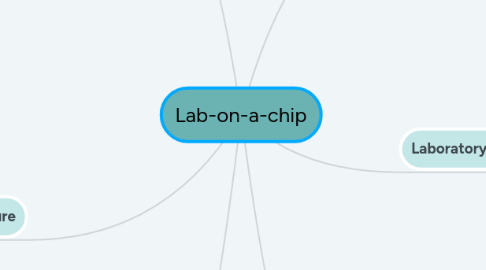
1. Sample
1.1. Analyte nature
1.1.1. Antigen
1.1.2. Pretern birth biomarkers
1.1.3. Protein
1.1.4. DNA
1.1.5. Cocaine
1.1.6. Peptides
1.2. Analyte concentration
1.2.1. 10^-18 mol/L
1.2.2. 10^-7 mol/L
1.2.3. 10^-6 mol/L
1.3. Matrix and interferents
1.3.1. Phosphate buffer
1.3.2. Saline solution
1.3.3. Buffer and tripsine
1.3.4. PCR product
1.3.5. PicoGreen
1.3.6. EDTA + Tris
1.3.7. Ethanol/water
2. Manufacture
2.1. Cost
2.1.1. Cheap
2.2. Production facilities
2.2.1. Power supply
2.2.2. Clean room and power supply
2.3. Adhesion
2.3.1. Double-sided tape
2.3.2. Adhesive bonding of two cross-linked layers
2.4. Process
2.4.1. Screen printed electrodes on a glass chip
2.4.2. Direct-printing technology
2.4.3. UV Replica-molding of thiol-ene polymers
3. Chip design
3.1. Channel geometry
3.1.1. Long and straight separation channel
3.1.2. Multiple channels for the reagents and one short monolith separation channel
3.2. Integrated features
3.2.1. Electrophoresis separation on the long channel
3.2.2. C8 monolith for the preconcentration and capillary electrophoresis CE
3.2.3. Open-Channel ElectroChromatography OCEC and capillary electrophoresis CE
3.2.4. Diazotisation zone
3.2.5. Colorimetric spot
3.2.6. Sharp electrospray ionization (ESI) emitter
3.3. Sample introduction
3.3.1. Via potentials application on the pretreatment channels
3.3.2. Pressure injection with a pump on the preteatment channels
3.3.3. Capillarity
3.3.4. Sequential injections
3.3.5. Diazotization and colorization
3.4. Multiplexing
3.4.1. Two dimensions electrochromatography
4. Experimental conditions
4.1. Reagents
4.1.1. Antigen
4.1.2. Enzymes
4.2. Corrosive
4.3. Temperature and Pression
4.3.1. Normal (ambiant)
5. Laboratory operations
5.1. Sample processing
5.1.1. Antibody/Antigen reaction
5.1.2. Electrochemical pretreatment: oxidation
5.2. Online reaction
5.2.1. Enzymatic postcolumn
5.3. Sample separation
5.3.1. Electrophoresis separation along a separation channel
5.3.2. Affinity chromatography separation
5.4. Detection
5.4.1. Amperometric detection
5.4.2. Fluorescence detection after CE
5.4.3. Laser-induced fluorescence
5.4.4. Mass spectrometry
6. Materials
6.1. Surface treatment
6.1.1. Screen printed electrodes for electrochemical detection
6.1.2. PDMS and COC layer
6.2. Surface chemistry
6.2.1. Glass chip
6.2.2. C8 monolith
6.2.3. Polyester-toner based microchip
6.2.4. Paper with hydrophobic barriers
6.2.5. Thiol-ene polymers
6.3. Physico-chemical properties
6.3.1. Difference of polarity and affinity with the solid phasis for preconcentration
